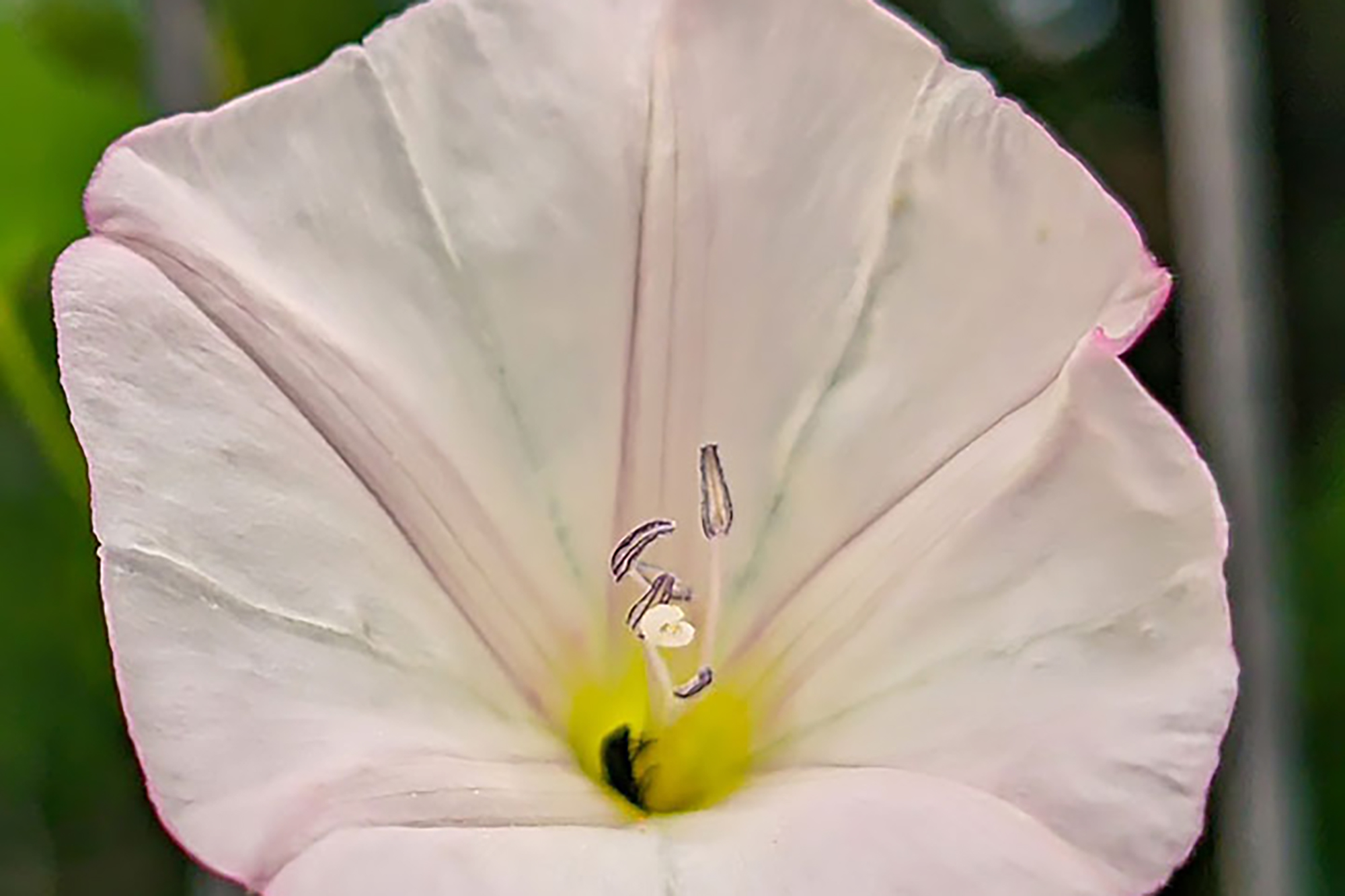Convolvulus arvensis

Lesser bindweed, European bindweed, withy wind, perennial morning glory, small-flowered morning glory, creeping jenny, possession vine, Κονβόλβουλος ο αρουραίος. Convolvulus arvensis is an herbaceous perennial with glabrous or pubescent stems that appear 4- or 5-angled due to their twining, growing up to 2m in length. The opposite, simple, sometimes pubescent leaves are borne on slender, glabrous or pubescent petioles that are +3 cm in length; leaves hastate or sagittate, 1-10 cm long and 0.25 – 6 cm in width. Venation is arcuate-pinnate. The plant produces deep, perenniating taproots with many annual lateral roots that spread radially and act as a method of vegetative reproduction via root buds. The species twines apically, and stems twist from right to left (dextrally). It is reported that C. arvensis loses its prostrate form and begins to twine in shady habitat.
Uses
The species has a long ethnobotanical history in Europe. The Greek physician Dioscorides suggested that the species stopped internal bleeding and helped heal wounds. By the 1700s, it was also described as a purgative and fever-reducer. It is still used in Turkey as a vegetable and condiment; in Arabic-speaking areas, the roots and leaves are still used as an anti-hemorrhagic and laxative.
The beliefs in the British Isles surrounding C. arvensis are quite different. In some regions, it is believed that if a woman picks it, her lover will die, giving it the common name of “young man’s death.” In other regions, it is referred to as “thunder flower”, associated with the belief that picking one will cause thunder. It is suggested both of these myths originate as stories told to children to prevent them from entering fields and killing horticultural plants.
Ecology
Field bindweed intertwines and topples native species. It competes with other species for sunlight, moisture and nutrients. It poses threats to restoration efforts and riparian corridors by choking out grasses and forbs. It can decrease habitat biodiversity. It is one of the most serious weeds of agricultural fields in temperate regions of the world.
Cultivation Notes
Prefers a lighter basic soil of low to medium fertility. Bindweed is a very deep-rooting plant with a vigourous root system that extends to a considerable distance and is very hard to eradicate from the soil. Even a small piece of the root will grow into a new plant if it is left in the ground. Once established this plant soon becomes a pernicious weed. It is a climbing plant that supports itself by twining around any support it can find and can soon swamp and strangle other plants. The flowers close at night and also during rainy weather. Although visited by numerous insects, the flowers seldom set fertile seed. On sunny days the flowers diffuse a scent and turns towards the sun (heliotrope). The plant harbours tobacco mosaic virus of the Solanaceae and so should not be grown near potatoes, tomatoes and other members of that family.
Classification
| Kingdom | Plantae |
| Phylum | Tracheophyta |
| Class | Magnoliopsida |
| Order | Solanales |
| Family | Convolvulaceae |
| Genus | Convolvulus |
| Species | Convolvulus arvensis |







